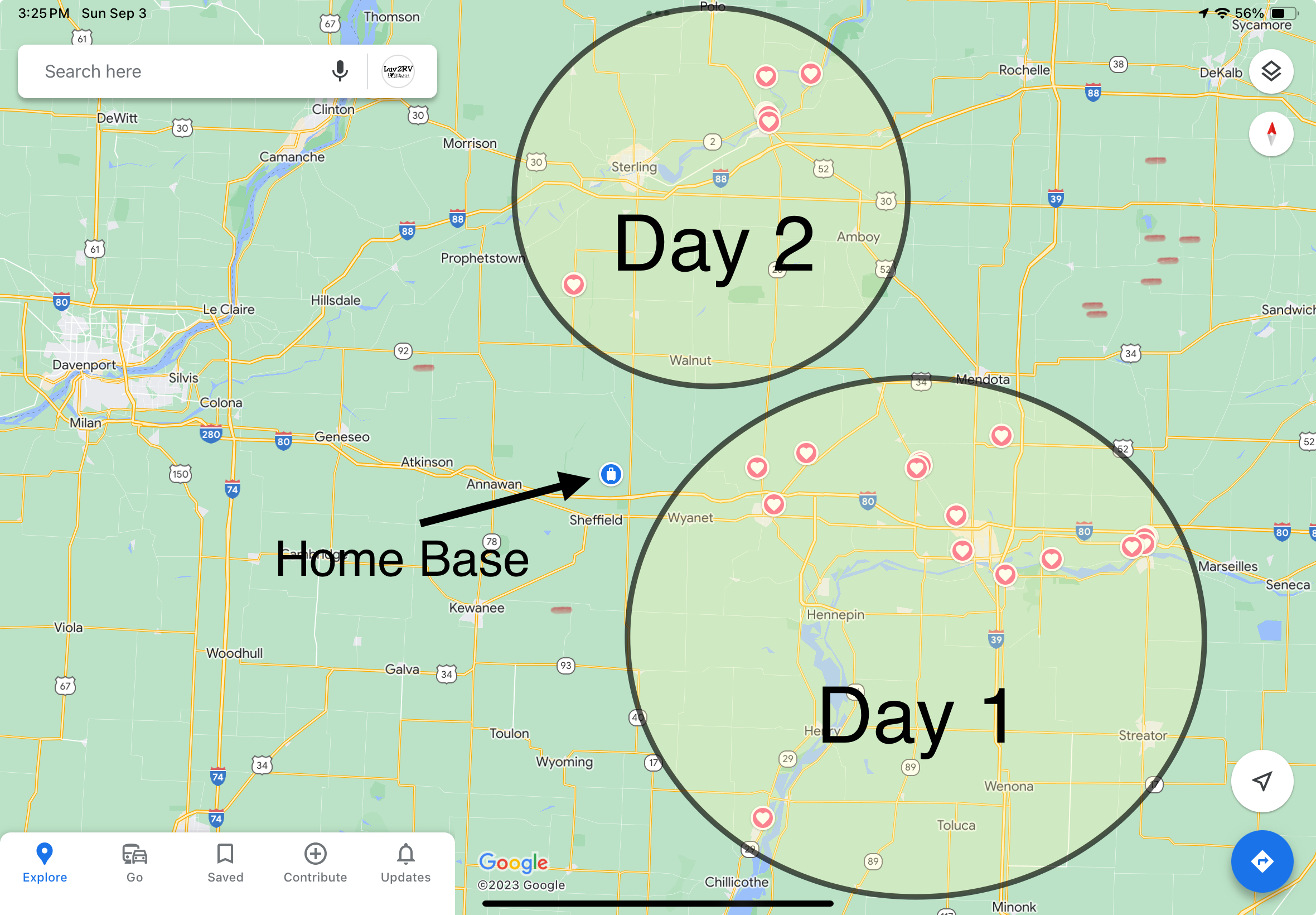
I think I set a new personal record by visiting 24 Roadside America sites in two days – 16 of them in a single day. When you’ve only got a couple of tourist days in a particular stop, you have to suck it up and get out there to see what you can. My normal routine when I arrive at a new location (shown here as the blue icon) is to pull up the Roadside App and look to see what areas of interest are no more than about an hours drive of me in any direction. Then, I use Google Maps and tag the locations (all the red hearts) of those most interesting, then figure out an area to visit for a day of sightseeing. There were quite a few places of interest around my location here in IL, so I got them all marked off, grouped them into two tourist days, and away I went. Day 1 was a particularly long day, but oh so much fun! Those, and all the exciting adventures that followed, are highlighted below in this edition of the Luv2RV Blog.
Sheffield, IL
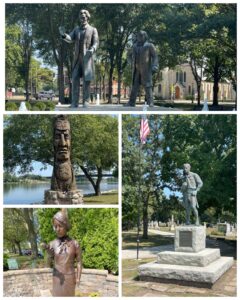 My fist stop during this portion of my journey takes me to Sheffield, IL. It was my first visit to this state, and one which will earn me a sticker on the US map I showcase on the slide of my RV. Having only 369 households and a population of 821, there wasn’t too much to see here in town. But east and north of me were a plentiful collection of interesting places and things to visit. Ottawa, IL for example, was home to the very first of seven Lincoln/Douglas debates, and a monument to that historical event resides here in Washington Square. 10,000 people were present on Aug 21, 1858 listening to these two candidates vying for a seat in the US Senate (spoiler alert – Lincoln lost, but would later defeat Douglas in a bid for the Presidency). Also in Ottawa was one of three Illinois Peter Toth carvings that are part of the Trails of the Whispering Giants series. This one pictured here titled Standing Proud, sits along the shores of the Illinois River and was dedicated in May, 1989. Also standing along the shores of the Illinois River is this statue and gravesite monument to William D. Boyce (1858-1929) – the founder of the Boy Scouts of America. The statue was added after his death in 1941 and reflects a young boy in shorts and knee high socks, sporting a Boy Scout uniform. In 1909, Boyce was traveling through London, got lost in some fog, and was helped by a young boy to find his way. The boy refused to accept a tip from Boyce, stating he was just performing his duty as a Boy Scout. Boyce was so impressed that when he returned home, he formed the American version of the Boy Scouts. Last up on my Ottawa tour was this statue known as the Radium Girl. This 2008 bronze is dedicated to the young women from the 1920s who worked at the Radium Dial Company, painting the tiny dials of a wristwatch with glow in the dark paint. Despite the company saying it was safe, the radium-laced paint was devastating to these woman, who suffered all sorts of ailments and early deaths. It wasn’t until a group of them, dubbed the Radium Girls, successfully sued the company that the dangerous practice was stopped.
My fist stop during this portion of my journey takes me to Sheffield, IL. It was my first visit to this state, and one which will earn me a sticker on the US map I showcase on the slide of my RV. Having only 369 households and a population of 821, there wasn’t too much to see here in town. But east and north of me were a plentiful collection of interesting places and things to visit. Ottawa, IL for example, was home to the very first of seven Lincoln/Douglas debates, and a monument to that historical event resides here in Washington Square. 10,000 people were present on Aug 21, 1858 listening to these two candidates vying for a seat in the US Senate (spoiler alert – Lincoln lost, but would later defeat Douglas in a bid for the Presidency). Also in Ottawa was one of three Illinois Peter Toth carvings that are part of the Trails of the Whispering Giants series. This one pictured here titled Standing Proud, sits along the shores of the Illinois River and was dedicated in May, 1989. Also standing along the shores of the Illinois River is this statue and gravesite monument to William D. Boyce (1858-1929) – the founder of the Boy Scouts of America. The statue was added after his death in 1941 and reflects a young boy in shorts and knee high socks, sporting a Boy Scout uniform. In 1909, Boyce was traveling through London, got lost in some fog, and was helped by a young boy to find his way. The boy refused to accept a tip from Boyce, stating he was just performing his duty as a Boy Scout. Boyce was so impressed that when he returned home, he formed the American version of the Boy Scouts. Last up on my Ottawa tour was this statue known as the Radium Girl. This 2008 bronze is dedicated to the young women from the 1920s who worked at the Radium Dial Company, painting the tiny dials of a wristwatch with glow in the dark paint. Despite the company saying it was safe, the radium-laced paint was devastating to these woman, who suffered all sorts of ailments and early deaths. It wasn’t until a group of them, dubbed the Radium Girls, successfully sued the company that the dangerous practice was stopped.
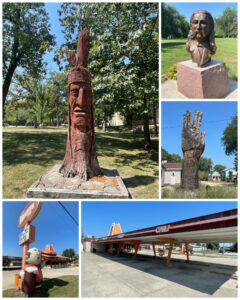 Next, I visited yet another Peter Toth Indian carving – this one located in Utica, IL on the grounds of the Starved Rock State Park. This one, number 62 in his series and also completed in 1989, sits nearby the park’s lodge, and is titled Chief Walks-with-the-Wind. He’s had a bit of maintenance done over the years, but overal seems to be in pretty good shape. Another interesting wood carving, but not done by Peter Toth, is of the Vulcan “Live long and prosper” symbol. This one is in a private yard in a residential neighborhood, was done by some anonymous Star Trek fan. Last year when I was in Deadwood, SD, I visited the gravesite of Wild Bill Hickok. Now, I got to complete his timeline by visiting his 1837 birthplace here in Troy Grove, IL. In fact, this bronze head monument that marks the historic location is identical to the one featured at his gravesite. Last up in this series was a visit to an old A&W Papa Burger statue from the 1960s – now adoring a place called the Root Beer Stand. I was excited to visit this place as the food reviews were quite good, it was around lunch time, it had been a long time since I’d had a root beer float, and I was getting hungry. However, despite the Google entry for this restaurant suggesting the place would be open, they apparently had changed their operating days as a sign on the door said they were closed. Damn – missed it again! But it was a pretty cool old fashioned drive-in type place, with squawk boxes at each parking spot to place your order. Given that it was closed, I had no way to check to see if the food was delivered via roller skates. That certainly would have been epic!
Next, I visited yet another Peter Toth Indian carving – this one located in Utica, IL on the grounds of the Starved Rock State Park. This one, number 62 in his series and also completed in 1989, sits nearby the park’s lodge, and is titled Chief Walks-with-the-Wind. He’s had a bit of maintenance done over the years, but overal seems to be in pretty good shape. Another interesting wood carving, but not done by Peter Toth, is of the Vulcan “Live long and prosper” symbol. This one is in a private yard in a residential neighborhood, was done by some anonymous Star Trek fan. Last year when I was in Deadwood, SD, I visited the gravesite of Wild Bill Hickok. Now, I got to complete his timeline by visiting his 1837 birthplace here in Troy Grove, IL. In fact, this bronze head monument that marks the historic location is identical to the one featured at his gravesite. Last up in this series was a visit to an old A&W Papa Burger statue from the 1960s – now adoring a place called the Root Beer Stand. I was excited to visit this place as the food reviews were quite good, it was around lunch time, it had been a long time since I’d had a root beer float, and I was getting hungry. However, despite the Google entry for this restaurant suggesting the place would be open, they apparently had changed their operating days as a sign on the door said they were closed. Damn – missed it again! But it was a pretty cool old fashioned drive-in type place, with squawk boxes at each parking spot to place your order. Given that it was closed, I had no way to check to see if the food was delivered via roller skates. That certainly would have been epic!
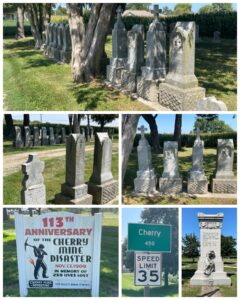 Next was a visit to the tiny town of Cherry – population 450. Sadly, the claim to fame of this rural community was that it is home to one of the worst mining disasters in Unites States history. The St. Paul Coal Company began mining coal here in Cherry in 1905, and by 1909 was mining 300,000 tons annually. On Nov 13, 1909, a fire broke out just outside the mine, but quickly spread into the mine. A handful of miners were able to escape, but in the end, 259 souls were lost that day. According to the 1910 census, that would have represented roughly 20% of the towns total population. To this day, Cherry continues to recognize the anniversary of this tragic event – this year to be its 113th. The local cemetery has a single monument (at left, bottom right) to pay homage to those who were not recovered or identified. Towards the back of the cemetery is a section which has many named gravesites – the headstones of which all reflect the same Nov 13, 1909 deceased date. That was really eerie. As a result of the disaster, the state legislature established stricter regulations for mine safety, and also passed a workman’s compensation act which established greater employer liability rules. So some positive outcome from this tragic event
Next was a visit to the tiny town of Cherry – population 450. Sadly, the claim to fame of this rural community was that it is home to one of the worst mining disasters in Unites States history. The St. Paul Coal Company began mining coal here in Cherry in 1905, and by 1909 was mining 300,000 tons annually. On Nov 13, 1909, a fire broke out just outside the mine, but quickly spread into the mine. A handful of miners were able to escape, but in the end, 259 souls were lost that day. According to the 1910 census, that would have represented roughly 20% of the towns total population. To this day, Cherry continues to recognize the anniversary of this tragic event – this year to be its 113th. The local cemetery has a single monument (at left, bottom right) to pay homage to those who were not recovered or identified. Towards the back of the cemetery is a section which has many named gravesites – the headstones of which all reflect the same Nov 13, 1909 deceased date. That was really eerie. As a result of the disaster, the state legislature established stricter regulations for mine safety, and also passed a workman’s compensation act which established greater employer liability rules. So some positive outcome from this tragic event
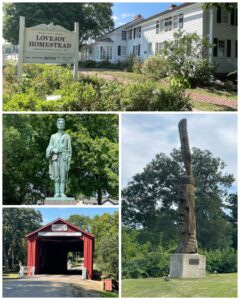 Next I headed south towards Hopewell to catch the third and final Peter Toth Indian head here in IL. This was an earlier piece named the Hopewell Giant, was number 16 in the series, and completed in 1975. It sits atop a steep hill at the entrance to the community known as Hopewell Estates. It actually looked like it might have been on private property, so I limited my viewing and photos to be from the road only. It was nice that I was able to complete three Toth art piece visits here in IL. A red covered bridge built in 1863 was my next scheduled stop heading north towards Princeton. It is said to be the only remaining covered bridge in IL that you can still drive through. Although I watched several cars successfully traversing across this bridge, it was a bit too sketchy looking for my big-boy truck so I opted to skip that portion of the visit. Also located in Princeton was the home of Owen Lovejoy which was part of the network of Underground Railroad hide-a-ways helping black people flee slavery before the Civil War. Unfortunately, it is only open for tours a few days of the week – none of which aligned with my visit to the area. So, I only got a photo-op from the outside. Lastly, I headed north to Dixon, IL to pickup the northern starting point of the Ronald Regan Trail. But before hitting his places, I visited this statue of Abraham Lincoln which is the only known statue of him wearing a uniform. It represents him at age 23 when he was stationed here as Captain of the volunteers during the Black Hawk War of 1832. The statue was dedicated in 1930.
Next I headed south towards Hopewell to catch the third and final Peter Toth Indian head here in IL. This was an earlier piece named the Hopewell Giant, was number 16 in the series, and completed in 1975. It sits atop a steep hill at the entrance to the community known as Hopewell Estates. It actually looked like it might have been on private property, so I limited my viewing and photos to be from the road only. It was nice that I was able to complete three Toth art piece visits here in IL. A red covered bridge built in 1863 was my next scheduled stop heading north towards Princeton. It is said to be the only remaining covered bridge in IL that you can still drive through. Although I watched several cars successfully traversing across this bridge, it was a bit too sketchy looking for my big-boy truck so I opted to skip that portion of the visit. Also located in Princeton was the home of Owen Lovejoy which was part of the network of Underground Railroad hide-a-ways helping black people flee slavery before the Civil War. Unfortunately, it is only open for tours a few days of the week – none of which aligned with my visit to the area. So, I only got a photo-op from the outside. Lastly, I headed north to Dixon, IL to pickup the northern starting point of the Ronald Regan Trail. But before hitting his places, I visited this statue of Abraham Lincoln which is the only known statue of him wearing a uniform. It represents him at age 23 when he was stationed here as Captain of the volunteers during the Black Hawk War of 1832. The statue was dedicated in 1930.
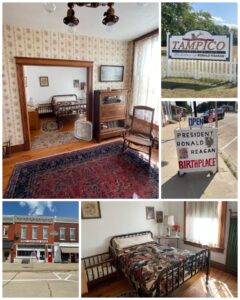 While Tampico, IL, population 800, is not the official start to the Ronald Reagan Trail, it is where his story actually begins. On Feb 6, 1911, here in the front bedroom of this 2nd floor apartment, Ronald Wilson Reagan was born. He was a robust 10lbs at birth, and it was reported that his mother spent the next six weeks in this front bedroom recovering from the challenging, yet natural, ordeal. At the time of his birth, the downstairs street-front was occupied by a bakery, later to be transformed into a bank. The original birth-home and bank have been nicely restored to their period correct versions, and are part of the Reagan birth-place museum (obviously the main attraction in this one horse town). I appear to have been the only visitor that day, or even for the past couple of days, based on the sign-in ledger at the museum. None the less, it was a delightful visit of upwards of an hour, lead on tour by a wonderful and knowledgeable senior woman docent. She took me through the museum with lots of Regan artifacts, then to the fully restored bank, then upstairs to the Reagan apartment where young Ronald spent his first three months of life – during which she provided lots of anecdotes about the Reagans, and
While Tampico, IL, population 800, is not the official start to the Ronald Reagan Trail, it is where his story actually begins. On Feb 6, 1911, here in the front bedroom of this 2nd floor apartment, Ronald Wilson Reagan was born. He was a robust 10lbs at birth, and it was reported that his mother spent the next six weeks in this front bedroom recovering from the challenging, yet natural, ordeal. At the time of his birth, the downstairs street-front was occupied by a bakery, later to be transformed into a bank. The original birth-home and bank have been nicely restored to their period correct versions, and are part of the Reagan birth-place museum (obviously the main attraction in this one horse town). I appear to have been the only visitor that day, or even for the past couple of days, based on the sign-in ledger at the museum. None the less, it was a delightful visit of upwards of an hour, lead on tour by a wonderful and knowledgeable senior woman docent. She took me through the museum with lots of Regan artifacts, then to the fully restored bank, then upstairs to the Reagan apartment where young Ronald spent his first three months of life – during which she provided lots of anecdotes about the Reagans, and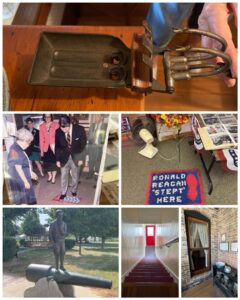 all about life there in Tampico in the early 1900s. After his presidency in 1992, Reagan returned to his birth town for a visit. With that visit planned, the town had a section of the museum rug specially crafted to show that former President Reagan had actually “stepped here” (pictured at right center). The stairs leading up to the apartment (at right, bottom center) were incredibly long and steep, and I can’t even imagine the effort required to bring up things like groceries, let alone large blocks of ice for the ice chest. Back in those days, as new buildings were constructed, it was common for a new section of a building to share a common wall with an existing building. In this case, there were windows (at right, bottom right) that linked two separate apartments which were often used to pass kids between families to share in watch duty. Accordingly, it was noted that young Ronald had been passed through this window. Also on the tour, located in the kitchen, was this crazy looking device (at right, top). The docent asked me if I knew what it was, and I guessed some sort of torture machine. Turns out I was wrong. Do you know what it is? (Answer at the bottom of the blog). Last up in the town of Tampico was this statue of a young Ronald Reagan playing on a cannon in the local park. Reportedly, he enjoyed doing so in his youth, so in 2013, sculptor Ted McElhined crafted this piece to celebrate the 100th anniversary of his birth (it was two years late due to fundraising delays). Pretty cool little town that is doing a wonderful job of keeping the history of Ronald Reagan’s birth well preserved.
all about life there in Tampico in the early 1900s. After his presidency in 1992, Reagan returned to his birth town for a visit. With that visit planned, the town had a section of the museum rug specially crafted to show that former President Reagan had actually “stepped here” (pictured at right center). The stairs leading up to the apartment (at right, bottom center) were incredibly long and steep, and I can’t even imagine the effort required to bring up things like groceries, let alone large blocks of ice for the ice chest. Back in those days, as new buildings were constructed, it was common for a new section of a building to share a common wall with an existing building. In this case, there were windows (at right, bottom right) that linked two separate apartments which were often used to pass kids between families to share in watch duty. Accordingly, it was noted that young Ronald had been passed through this window. Also on the tour, located in the kitchen, was this crazy looking device (at right, top). The docent asked me if I knew what it was, and I guessed some sort of torture machine. Turns out I was wrong. Do you know what it is? (Answer at the bottom of the blog). Last up in the town of Tampico was this statue of a young Ronald Reagan playing on a cannon in the local park. Reportedly, he enjoyed doing so in his youth, so in 2013, sculptor Ted McElhined crafted this piece to celebrate the 100th anniversary of his birth (it was two years late due to fundraising delays). Pretty cool little town that is doing a wonderful job of keeping the history of Ronald Reagan’s birth well preserved.
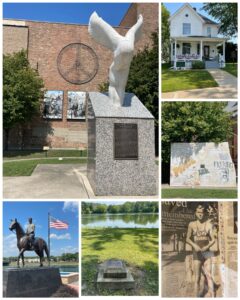 My final stop on this day’s mega adventure was to the town of Dixon, IL – home to where Ronald Reagan spent the majority of his youth from elementary school through high school. What is known to be his boyhood home (at left, top right) is located here. Also in town, a nice statue of him on a horse, surrounded by several fountains, sits along the shore of the Rock River. Further up river in Lowell Park, is a lifeguard plaque (at left, center bottom) that commemorates the years he served as a lifeguard (at left, bottom right). It is believed that young and strong lifeguard Ronald Reagan saved the lives of 77 people during his lifeguard career. That’s pretty amazing! But it was also noted that many of those saved lives were from young teenage girls – likely seeking the attention of a good looking lifeguard. So maybe those number are a bit inflated. Last up on the Dixon tour is this statue titled The Wings of Peace and Freedom – a gift from Nick Tanev, an immigrant from Bulgaria to the US. It represents an expression of gratitude to President Reagan for his role in ending the Cold War. Despite the efforts to acquire a piece of the Berlin Wall to coincide with this sculpture, instead they had a fake one created – complete with graffiti. Not a bad fake!
My final stop on this day’s mega adventure was to the town of Dixon, IL – home to where Ronald Reagan spent the majority of his youth from elementary school through high school. What is known to be his boyhood home (at left, top right) is located here. Also in town, a nice statue of him on a horse, surrounded by several fountains, sits along the shore of the Rock River. Further up river in Lowell Park, is a lifeguard plaque (at left, center bottom) that commemorates the years he served as a lifeguard (at left, bottom right). It is believed that young and strong lifeguard Ronald Reagan saved the lives of 77 people during his lifeguard career. That’s pretty amazing! But it was also noted that many of those saved lives were from young teenage girls – likely seeking the attention of a good looking lifeguard. So maybe those number are a bit inflated. Last up on the Dixon tour is this statue titled The Wings of Peace and Freedom – a gift from Nick Tanev, an immigrant from Bulgaria to the US. It represents an expression of gratitude to President Reagan for his role in ending the Cold War. Despite the efforts to acquire a piece of the Berlin Wall to coincide with this sculpture, instead they had a fake one created – complete with graffiti. Not a bad fake!
Chesterton, IN
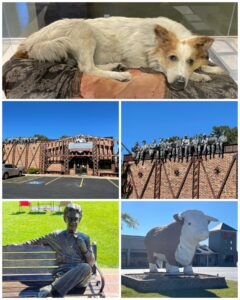 My next stop along my eastward journey brought me to Chesterton, IN. Again, lots and lots of things to see and places to visit in this area. Fortunately, I was here for a week, so I could break up the tourist days much better (and have a day or two of downtime to recoup). My first day of travel would take me south to Valparaiso, IN, then out toward the east to La Porte. Besides taking advantage of picking up an Amazon order from one of their locker systems located in Valparaiso, there were several sites to see in this quaint medium sized town of roughly 34k. First up was a visit to the Porter County Museum. This small regional museum had the standard fair of various local historical artifacts, the most popular of which, and that which Roadside brought me to, was Daisy – the stuffed collie mix dog (at right, top). This poor family pet was tragically hit by a car and killed in the early 1930s. The owner Helen Slanger was so devastated that in lieu of burring her, she had her stuffed. Daisy enjoyed a restful afterlife for the next 40 years laying on the Slanger family sofa. When Helen passed in 1972, her husband donated Daisy to the Porter County Museum – which had been founded by relatives who were strangely agreeable to accept this odd gift. So, for the past 50+ years, Daisy has enjoyed her somewhat celebrity life protected by a plexiglass enclosure here at the museum. What a life! Orville Redenbacher, the king of popcorn, had his company’s operations here in Valparaiso, so in a 2012 dedication, this likeness of him sitting on a park bench created by Lou Cella was unvailed. Nicely done! Last up in town were a couple of Roadside oddities to include this giant bull sitting in front of a steak house restaurant. Finally, the Industrial Revolution Eatery & Grill recognizes and salutes old-school iron workers with interesting building architecture – including this group of workers sitting at the edge of the roof, eating their lunch. Too cool!
My next stop along my eastward journey brought me to Chesterton, IN. Again, lots and lots of things to see and places to visit in this area. Fortunately, I was here for a week, so I could break up the tourist days much better (and have a day or two of downtime to recoup). My first day of travel would take me south to Valparaiso, IN, then out toward the east to La Porte. Besides taking advantage of picking up an Amazon order from one of their locker systems located in Valparaiso, there were several sites to see in this quaint medium sized town of roughly 34k. First up was a visit to the Porter County Museum. This small regional museum had the standard fair of various local historical artifacts, the most popular of which, and that which Roadside brought me to, was Daisy – the stuffed collie mix dog (at right, top). This poor family pet was tragically hit by a car and killed in the early 1930s. The owner Helen Slanger was so devastated that in lieu of burring her, she had her stuffed. Daisy enjoyed a restful afterlife for the next 40 years laying on the Slanger family sofa. When Helen passed in 1972, her husband donated Daisy to the Porter County Museum – which had been founded by relatives who were strangely agreeable to accept this odd gift. So, for the past 50+ years, Daisy has enjoyed her somewhat celebrity life protected by a plexiglass enclosure here at the museum. What a life! Orville Redenbacher, the king of popcorn, had his company’s operations here in Valparaiso, so in a 2012 dedication, this likeness of him sitting on a park bench created by Lou Cella was unvailed. Nicely done! Last up in town were a couple of Roadside oddities to include this giant bull sitting in front of a steak house restaurant. Finally, the Industrial Revolution Eatery & Grill recognizes and salutes old-school iron workers with interesting building architecture – including this group of workers sitting at the edge of the roof, eating their lunch. Too cool!
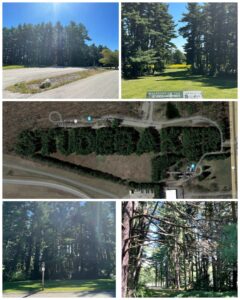 My next stop took me to the east to South Bend, IN, where I would find Bendix Woods Park. Before it was a park, it was a test track for car manufacturer Studebaker. They purchased the land in 1926 from area farmers to create the Studebaker Proving Ground. A couple years later in 1928, Studebaker initiated reforestation on some of the land not used to test vehicles. In the early 1930s, two Studebaker engineers came up with the idea to use some of the reforestatation as a marketing strategy to advertise the presence of the proving ground to the emerging aviation field so pilots and passengers could see them from the air. Plans and designs were developed and in 1938, work began by the Civilian Conservation Corps to strategically plant upwards of 8,000 six-inch pine tree seedlings to form the word STUDEBAKER. Red Pines filled the center of the letters, while White Pines formed the letter’s outline. As you can imagine, there’s not really much to see from the ground. Rows and rows of now very tall pine trees are all that is visible from the park. They do however have letter signs at each location telling you which letter those group of trees form. Anyway, I included a Google Map satellite view (at left, center) to show you what it looks like from up above. Now that’s marketing!
My next stop took me to the east to South Bend, IN, where I would find Bendix Woods Park. Before it was a park, it was a test track for car manufacturer Studebaker. They purchased the land in 1926 from area farmers to create the Studebaker Proving Ground. A couple years later in 1928, Studebaker initiated reforestation on some of the land not used to test vehicles. In the early 1930s, two Studebaker engineers came up with the idea to use some of the reforestatation as a marketing strategy to advertise the presence of the proving ground to the emerging aviation field so pilots and passengers could see them from the air. Plans and designs were developed and in 1938, work began by the Civilian Conservation Corps to strategically plant upwards of 8,000 six-inch pine tree seedlings to form the word STUDEBAKER. Red Pines filled the center of the letters, while White Pines formed the letter’s outline. As you can imagine, there’s not really much to see from the ground. Rows and rows of now very tall pine trees are all that is visible from the park. They do however have letter signs at each location telling you which letter those group of trees form. Anyway, I included a Google Map satellite view (at left, center) to show you what it looks like from up above. Now that’s marketing!
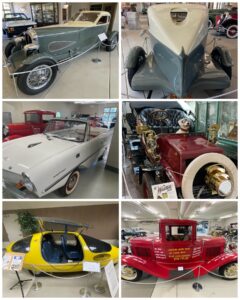 About 15 miles east of Chesterton is La Porte (The Door for you non French-speaking types) – so named by French Explorers from the 1670s who travelled the area following Indian trails forming passageways or doors through the forest. I visited the La Porte County Historical Society and Museum there in town. Besides having your typical local historical artifacts, there was an incredible car collection that belonged to La Porte native dentist Dr. Peter Kesling. This collection consisted of over 30 vintage automobiles, some of which I recognized (‘38 Mercedes, ‘82 Delorean, ‘11 Model-T, ‘67 Amphicar), , while others being quite unique and ones I’d not ever seen before (‘14 Mitchell, ‘34 Citroen, ‘29 Auburn, ‘34 Brewster, ‘48 Playboy, and a super rare ‘48 Tucker numbered 12 of only 50 made). Most notably in the collection was a fully restore 1903 Winton (at right, center right) that in 2003 Dr Kesling and his wife used for a trip from San Francisco to New York – a trip that recreated the 1903 first cross country trip completed by an automobile; a 1903 Winton. That 1903 first crossing took 64 days to complete. The Keslings did it in 40.
About 15 miles east of Chesterton is La Porte (The Door for you non French-speaking types) – so named by French Explorers from the 1670s who travelled the area following Indian trails forming passageways or doors through the forest. I visited the La Porte County Historical Society and Museum there in town. Besides having your typical local historical artifacts, there was an incredible car collection that belonged to La Porte native dentist Dr. Peter Kesling. This collection consisted of over 30 vintage automobiles, some of which I recognized (‘38 Mercedes, ‘82 Delorean, ‘11 Model-T, ‘67 Amphicar), , while others being quite unique and ones I’d not ever seen before (‘14 Mitchell, ‘34 Citroen, ‘29 Auburn, ‘34 Brewster, ‘48 Playboy, and a super rare ‘48 Tucker numbered 12 of only 50 made). Most notably in the collection was a fully restore 1903 Winton (at right, center right) that in 2003 Dr Kesling and his wife used for a trip from San Francisco to New York – a trip that recreated the 1903 first cross country trip completed by an automobile; a 1903 Winton. That 1903 first crossing took 64 days to complete. The Keslings did it in 40.
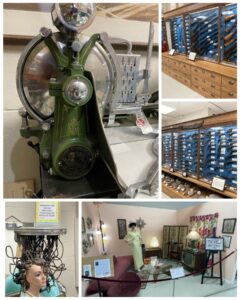 There were a lot of other interesting items and collections in the museum. This included several themed rooms representing life from the pioneer days through the mid century – one in particular was a beauty salon with the wackiest hair curling gadget I’ve ever seen (at left, lower left). Several meat slicing machines (at left, top left) were on display that were manufactured by the Berkel Slicing Machine Company – invented by W.A. Van Berkel, a butcher in Rotterdam Netherlands. U.S. Manufacturing began in 1909 in Chicago, but relocated to a new and much larger factory here in La Porte. Also featured in the museum was an amazing gun collection amassed by William A. Jones. W. A Jones was the owner of a Chicago iron foundry, a world traveler, and avid gun collector. This display of upwards of 850 firearms were bequeathed to the City of La Porte upon his death in 1921. What an amazing collection!
There were a lot of other interesting items and collections in the museum. This included several themed rooms representing life from the pioneer days through the mid century – one in particular was a beauty salon with the wackiest hair curling gadget I’ve ever seen (at left, lower left). Several meat slicing machines (at left, top left) were on display that were manufactured by the Berkel Slicing Machine Company – invented by W.A. Van Berkel, a butcher in Rotterdam Netherlands. U.S. Manufacturing began in 1909 in Chicago, but relocated to a new and much larger factory here in La Porte. Also featured in the museum was an amazing gun collection amassed by William A. Jones. W. A Jones was the owner of a Chicago iron foundry, a world traveler, and avid gun collector. This display of upwards of 850 firearms were bequeathed to the City of La Porte upon his death in 1921. What an amazing collection!
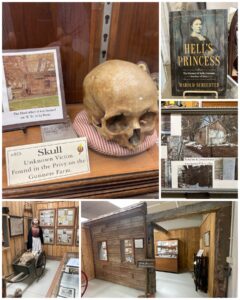 However, the big draw to the museum is the area that features Belle Gunness. A Norwegian born nicknamed Hell’s Belle, was a serial killer in Illinois and Indiana from 1884 to 1908. It is believed she killed at least fourteen people, mostly men, that she lured to her rural La Porte Indiana property through personal ads in the local newspaper. Some believe she may have actually killed upwards of forty people – making her one of the most prolific female serial killers in history. Books have been written about her, and many documentaries have been produced telling the story of her violent life (a well done one HERE). The museum section dedicated to her includes a portion of the actual cabin that was on her property that survived a 1908 fire – a fire which resulted in the finding of the remains of many men buried all around the property. Also, the human skull of an unknown murder victim is also on display, along with the garden cart (at right, bottom left) that was used to transport her victims to their burial grounds. I had not heard about this story prior, and definitely found it very interesting, if not a bit gruesome.
However, the big draw to the museum is the area that features Belle Gunness. A Norwegian born nicknamed Hell’s Belle, was a serial killer in Illinois and Indiana from 1884 to 1908. It is believed she killed at least fourteen people, mostly men, that she lured to her rural La Porte Indiana property through personal ads in the local newspaper. Some believe she may have actually killed upwards of forty people – making her one of the most prolific female serial killers in history. Books have been written about her, and many documentaries have been produced telling the story of her violent life (a well done one HERE). The museum section dedicated to her includes a portion of the actual cabin that was on her property that survived a 1908 fire – a fire which resulted in the finding of the remains of many men buried all around the property. Also, the human skull of an unknown murder victim is also on display, along with the garden cart (at right, bottom left) that was used to transport her victims to their burial grounds. I had not heard about this story prior, and definitely found it very interesting, if not a bit gruesome.
 Next, I get to check off another National Park visit. Indiana Dunes NP is located along the shores of Lake Michigan, and offers lots of hiking, camping, and beach squatting opportunities. Honestly, as national parks go, this one was not as impressive as those I had visited in months prior. But I get it, there is very little in this country that fairly competes with the likes of the Grand Canyon. I guess maybe it’s that I’m not really much of a beach guy to begin with that made this park just “eh”. The 20 miles of seashore and 15 miles of beaches along the southern end of Lake Michigan was first designated as Indiana Dunes National Lakeshore, then redesignated as the nations’ 61st national park in 2019. What I did find interesting was that this park has one of the most diverse collection of plants of any place within the National Park System. Over
Next, I get to check off another National Park visit. Indiana Dunes NP is located along the shores of Lake Michigan, and offers lots of hiking, camping, and beach squatting opportunities. Honestly, as national parks go, this one was not as impressive as those I had visited in months prior. But I get it, there is very little in this country that fairly competes with the likes of the Grand Canyon. I guess maybe it’s that I’m not really much of a beach guy to begin with that made this park just “eh”. The 20 miles of seashore and 15 miles of beaches along the southern end of Lake Michigan was first designated as Indiana Dunes National Lakeshore, then redesignated as the nations’ 61st national park in 2019. What I did find interesting was that this park has one of the most diverse collection of plants of any place within the National Park System. Over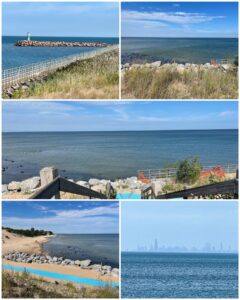 1,400 various plants, 90 of which are threatened or endangered, call Indiana Dunes home. Certainly not something I would have guessed if it came up during bar night trivia
1,400 various plants, 90 of which are threatened or endangered, call Indiana Dunes home. Certainly not something I would have guessed if it came up during bar night trivia
The dunes were picturesque, and the faint outline of the Chicago skyline (at right center and bottom right) from the vantage point of Portage Lakefront was kinda cool. I was in this area over the Labor Day holiday weekend which made access to the various beaches pretty much impossible due to the heavy crowds and limited parking. I opted instead to make my visit on the Tuesday after the holiday and as it turned out, that was an excellent decision. Even then, there were plenty of locals enjoying what is likely to be the end of the summer season here in Indiana. I limited my visits to West Beach and Portage Lakefront, as this was more than enough beach sand for me.
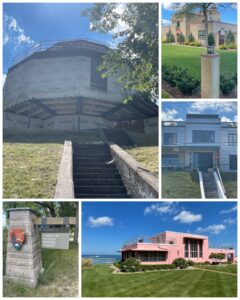 Lastly, I drove down Lake Front Dr., through Beverly Shores which features the 1933 Chicago Worlds Fair Century of Progress Homes. These homes were part of a dozen homes featured at the fair – five of which were purchased by Robert Bartlett and relocated to Indiana by barge as part of a resort community he was developing. They remained in private hands for the next several decades. That is until after the land on which they stood became federal property with the establishment of Indiana Dunes National Lakeshore in 1966. The homes were eventually purchased by the NPS in 1980 at which time they were added to the National Register of Historic Places. With spectacular views of Lake Michigan, four of the five homes are occupied by private families who lease them from the NPS. Tours of the homes are only offered one day a year on the last weekend of Sep. Four of the homes have been fully restored, while one of them, named House of Tomorrow (at left, top left), is currently undergoing restoration and preservation. Pretty cool to see historic homes like these under NPS control and preservation.
Lastly, I drove down Lake Front Dr., through Beverly Shores which features the 1933 Chicago Worlds Fair Century of Progress Homes. These homes were part of a dozen homes featured at the fair – five of which were purchased by Robert Bartlett and relocated to Indiana by barge as part of a resort community he was developing. They remained in private hands for the next several decades. That is until after the land on which they stood became federal property with the establishment of Indiana Dunes National Lakeshore in 1966. The homes were eventually purchased by the NPS in 1980 at which time they were added to the National Register of Historic Places. With spectacular views of Lake Michigan, four of the five homes are occupied by private families who lease them from the NPS. Tours of the homes are only offered one day a year on the last weekend of Sep. Four of the homes have been fully restored, while one of them, named House of Tomorrow (at left, top left), is currently undergoing restoration and preservation. Pretty cool to see historic homes like these under NPS control and preservation.
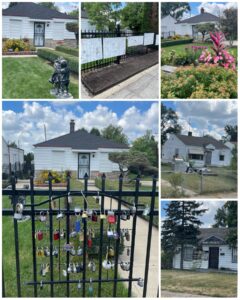 Lastly, I ventured out to the west to check out several Roadside attractions throughout the area. First stop was to Gary, IN, once a bustling steel town, now a sad example of urban decay, and extremely sketchy to drive though. I had only two stops planned here – one to see an interesting art piece, and second to visit the childhood home and birthplace of the Jackson family. In both cases, I kept the truck running, stepped out, quickly took a few pictures, then jumped back in and drove off. I found the Jackson home nicely restored, fenced in with beautiful lawn and colorful gardens. There was a lock collection forming along the front fence, and the white signs that were placed along the side fence were filled with signatures and well wishes from adoring fans. But the rest of the immediate neighborhood, including the homes directly adjoining the Jackson home and the home across the street (at right, center and bottom right), were in total disrepair and even boarded up – much like a lot of the rest of the town of Gary. It was certainly a must see attraction in the area, but I was none too thrilled to be out of there.
Lastly, I ventured out to the west to check out several Roadside attractions throughout the area. First stop was to Gary, IN, once a bustling steel town, now a sad example of urban decay, and extremely sketchy to drive though. I had only two stops planned here – one to see an interesting art piece, and second to visit the childhood home and birthplace of the Jackson family. In both cases, I kept the truck running, stepped out, quickly took a few pictures, then jumped back in and drove off. I found the Jackson home nicely restored, fenced in with beautiful lawn and colorful gardens. There was a lock collection forming along the front fence, and the white signs that were placed along the side fence were filled with signatures and well wishes from adoring fans. But the rest of the immediate neighborhood, including the homes directly adjoining the Jackson home and the home across the street (at right, center and bottom right), were in total disrepair and even boarded up – much like a lot of the rest of the town of Gary. It was certainly a must see attraction in the area, but I was none too thrilled to be out of there.
 After visiting the Jackson home, I drove a few minutes away to see the art pieced titled “The Fusion” (at left, center left). It was crafted by artist Omari Amrany in 2006 and with its mix of iron workers and fairies was intended to symbolize Gary’s rebirth. Sadly, this piece sits next to the abandoned Genesis Convention Center, and the area surrounding the art piece was severely overgrown and riddled with litter – a symbol of the not so present rebirth of the city. Next I paid a visit to the gravesite of George Molchan – one of several “Little Oscar” characters that drove around in the Wienermobile as a spokesman and advertiser for Oscar Mayer hotdogs. In fact, he was the last of the Little Oscar’s retiring in 1987 after 36 years of service. Nice grave marker honoring this Wienermobile pilot. Next I was to visit a piece of preserved Lincoln Highway. Unfortunately, limited parking and a lack of nerve on my part to walk across a busy highway having tons of traffic, only allowed me the opportunity to view this Roadside from afar. It is simply a 6 or so feet section of original concrete roadway that sits parallel to what is now US Highway 30. But that’s ok, I much preferred that 3-mile stretch I drove and reported on in my last blog.
After visiting the Jackson home, I drove a few minutes away to see the art pieced titled “The Fusion” (at left, center left). It was crafted by artist Omari Amrany in 2006 and with its mix of iron workers and fairies was intended to symbolize Gary’s rebirth. Sadly, this piece sits next to the abandoned Genesis Convention Center, and the area surrounding the art piece was severely overgrown and riddled with litter – a symbol of the not so present rebirth of the city. Next I paid a visit to the gravesite of George Molchan – one of several “Little Oscar” characters that drove around in the Wienermobile as a spokesman and advertiser for Oscar Mayer hotdogs. In fact, he was the last of the Little Oscar’s retiring in 1987 after 36 years of service. Nice grave marker honoring this Wienermobile pilot. Next I was to visit a piece of preserved Lincoln Highway. Unfortunately, limited parking and a lack of nerve on my part to walk across a busy highway having tons of traffic, only allowed me the opportunity to view this Roadside from afar. It is simply a 6 or so feet section of original concrete roadway that sits parallel to what is now US Highway 30. But that’s ok, I much preferred that 3-mile stretch I drove and reported on in my last blog.
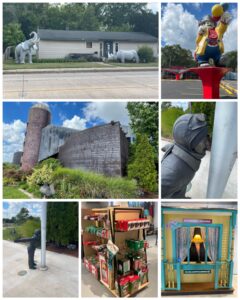 My final collection of Roadside visits in this area includes a visit to the colorful Hobo mascot that since the 1950s has stood outside of Ruben’s Restaurant. And not to be outdone, directly across the street are a giant elephant and rhino sitting in front of Green Fields Trading Co. The rhino once sported a 60s themed psychedelic paint job and was advertising for the store that once sold hippie-era merchandise. The store has since closed, and the rhino has been restored to its normal grey color. Finally, I paid a visit to the Indiana Welcome Center (at right, center left) where outside is a bronze statue of a boy with his tongue stuck to a flagpole. This, and several iconic items from the movie, including a replica of the infamous leg lamp, are inside the visitor center and pays tribute to the most famous scenes in the film “A Christmas Story”. Though the house seen in the movie is actually located in Cleveland, OH, the town where all the events in the film really took place was Holman – a fictional town based on the real town of Hammond, IN. So, this is the place to get your Christmas Story groove on.
My final collection of Roadside visits in this area includes a visit to the colorful Hobo mascot that since the 1950s has stood outside of Ruben’s Restaurant. And not to be outdone, directly across the street are a giant elephant and rhino sitting in front of Green Fields Trading Co. The rhino once sported a 60s themed psychedelic paint job and was advertising for the store that once sold hippie-era merchandise. The store has since closed, and the rhino has been restored to its normal grey color. Finally, I paid a visit to the Indiana Welcome Center (at right, center left) where outside is a bronze statue of a boy with his tongue stuck to a flagpole. This, and several iconic items from the movie, including a replica of the infamous leg lamp, are inside the visitor center and pays tribute to the most famous scenes in the film “A Christmas Story”. Though the house seen in the movie is actually located in Cleveland, OH, the town where all the events in the film really took place was Holman – a fictional town based on the real town of Hammond, IN. So, this is the place to get your Christmas Story groove on.
 Finally, my last bit of Roadside shenanigans takes me to several interesting art pieces. First up, was a visit to this 18-foot tall, eight-ton sculpture of a fedora-wearing 1940s reporter sitting on a giant manual typewriter. This piece sits at the entrance to the Times newspaper of northwest Indiana and was created by sculptor Zachary Oxman. It is made of stainless steel to pay homage to Indiana’s steel industry, as well as being the best material to withstand this area’s weather. Interestingly, a town ordinance for public-art-for-construction compelled the Times to spend some money, so they decided on a sculpture to promote the importance of news reporting. I actually think it was money well spent! Finally, I visited a neighborhood Rotary Park titled “Yesterday & Today for Tomorrow” which features a series of three 18 foot tall figures representing the towns history and evolution – a Native American, a farmer, and an iron worker. It was commissioned by the Munster Rotary Club in observance of the town’s 1976 Bicentennial, and was created by metal sculptor Fred Holly. Pretty nicely done!
Finally, my last bit of Roadside shenanigans takes me to several interesting art pieces. First up, was a visit to this 18-foot tall, eight-ton sculpture of a fedora-wearing 1940s reporter sitting on a giant manual typewriter. This piece sits at the entrance to the Times newspaper of northwest Indiana and was created by sculptor Zachary Oxman. It is made of stainless steel to pay homage to Indiana’s steel industry, as well as being the best material to withstand this area’s weather. Interestingly, a town ordinance for public-art-for-construction compelled the Times to spend some money, so they decided on a sculpture to promote the importance of news reporting. I actually think it was money well spent! Finally, I visited a neighborhood Rotary Park titled “Yesterday & Today for Tomorrow” which features a series of three 18 foot tall figures representing the towns history and evolution – a Native American, a farmer, and an iron worker. It was commissioned by the Munster Rotary Club in observance of the town’s 1976 Bicentennial, and was created by metal sculptor Fred Holly. Pretty nicely done!
Final Thoughts
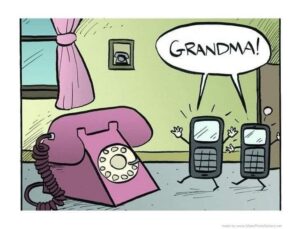 Well, another fun-filled series of stops as I continue to make my way to the east. Visiting lots of areas I’ve not previously been, and seeing lots of interesting historical and otherwise interesting places. I continue to relish how fortunate I am to enjoy the many benefits of this nomadic lifestyle and look forward to many continued years of travel. The next several weeks will take me through OH and NY, where I’ll visit with some friends, and continue my relentless sightseeing adventures. I’ve got just over nine weeks left in this year’s trip before returning to my FL home base where I will hibernate for the winter. Still so much to see and so many towns to explore! Till next time, be well and safe travels.
Well, another fun-filled series of stops as I continue to make my way to the east. Visiting lots of areas I’ve not previously been, and seeing lots of interesting historical and otherwise interesting places. I continue to relish how fortunate I am to enjoy the many benefits of this nomadic lifestyle and look forward to many continued years of travel. The next several weeks will take me through OH and NY, where I’ll visit with some friends, and continue my relentless sightseeing adventures. I’ve got just over nine weeks left in this year’s trip before returning to my FL home base where I will hibernate for the winter. Still so much to see and so many towns to explore! Till next time, be well and safe travels.
P.S. That crazy looking contraption featured above is actually a cherry pitting machine. Two rows of cherries are lined up on the machine, and when they roll forward into the indentations, the pits are removed two at a time by swinging the handle towards the back and driving the pits down and through the bottom of the cherries. Then, the handle swings back which causes the now pitted cherries to be pushed off onto the little wooden ramp then presumably into a waiting bowl below. Who knew?
I only show a sampling of my adventure pictures here in the blog, and do so mostly in collage format for brevity and ease of reading. If you want to view an album containing individual full fidelity and hi-res images of all my travel pictures related to this specific blog, click the image below. Enjoy!

Great blog. The iron workers sitting on the steel beam in Chesterton, IN sent me on a search of our local Salvatore’s Garden Place which has the same iron workers sitting on a beam atop a mural of New York City’s Skyline dated 1932. I sent you the Road Side America link via email. Continued safe travels. I like that the Dunes National Park had a blue carpet available for people in wheel chairs or who have difficulty walking in sand.
Thanks for the link. I’m gonna have to add that to my list when I’m there. See you soon!
You are welcome. I adjusted my calendar with your start date. When I looked at your schedule, I looked at the End Date and the 7 days, hence I had you arriving 9/22/23!!! Nice weather coming up – 70’s and 56 at night – perfect for sight seeing and camp fires. May I suggest the Niagara Scenic Trolley when you visit the American Falls State Park – $3 and you can hop on and hop off to see Goat Island, Terrapin Point and Bridal Veil Falls. There is free parking along the Riverway (formerly the Robert Moses Parkway) and then a short walk to the Trolley ticket kiosk. Paula
Great blog! You really got your monies worth on this leg of your trip. It is a shame that you did not feel safe in Gary IN. The giant manual typewriter was pretty cool. Enjoy your remaining time and looking forward to seeing you when back at homebase.
Yea, Gary was definitely not my favorite place. Had it not been for the Jackson home, I would have skipped it all together. I too really liked the Times typewriter art piece. It was well done. See ya in a few months.
Great blog again Bruce. I would have never guessed that contraption was a cherry pitting machine! I got a little choked up reading Daisy’s story. Happy that she will be remembered. I’m sure that would make Helen very happy. Best wishes for your next few months of travel. Look forward to your Niagara Falls visit. We are thinking of going next summer and have been looking at pet friendly hotels close by. We had booked a trip there for summer 2020 but you know how that went.
Can’t waif for the next.blog!!!
I know right? A cherry pitter? Definitely not something I would have guessed even with a hundred chances. The Daisy story was sad, but to be present and loved and seen and enjoyed for the past 90 plus years is not a bad way to go. I’ve been to Niagara a few times, and it’s still amazing each time. You should definitely check it out. I’m looking forward to seeing it again.
“My next stop along my westward journey brought me to Chesterton, IN.” Aren’t you heading east? I remember when I went to school in Indiana way back when that Gary was not a safe place even then. I liked your guess of the torture machine over the cherry pitting device. Safe travels as you continue your adventure.
Oops – good catch and thanks for the heads up. A temporarily glitch in my directional skills. I’m guessing your time in Indiana was quite a while ago, and it would seem they’ve had plenty of time to recover from the steel bust. Truly sad to see so much boarded up and abandoned and just plain trashed. I don’t see how they could ever recover.
I am looking forward to your blog of the Niagara Falls area! What up pleasure it was to chat with you at the Allen Herschel Carrousel Museum! You came at just the right time when it was quiet!
Continued safe travels to your reunion!
Docent Dru
Hi Docent Dru! Thanks for the blog visit. I just published my NY trip, so check it out. Again, all my thanks to you for the personal one-on-one tour of the Herschell museum. The pleasure was certainly all mine.
Great blog as always – so many amazing things to see!! Looking forward to seeing you next month.
Safe travels!